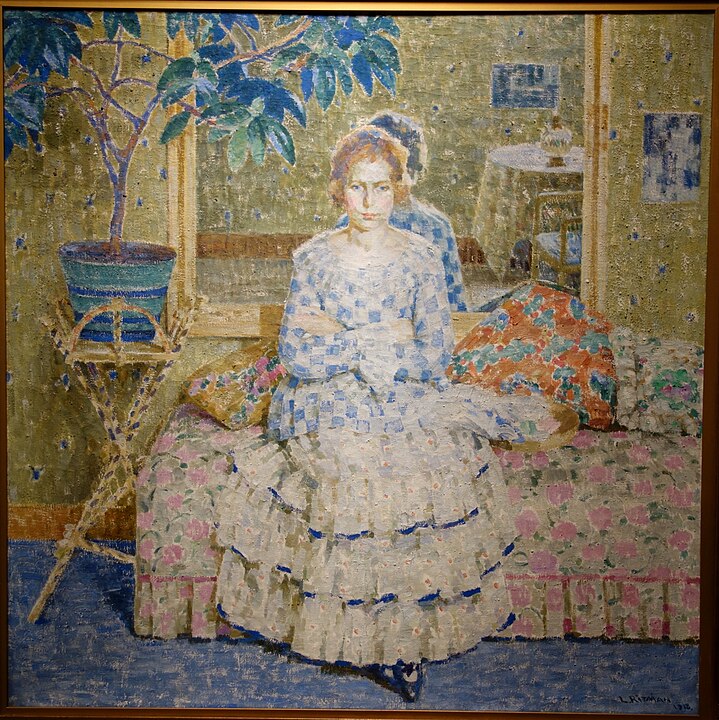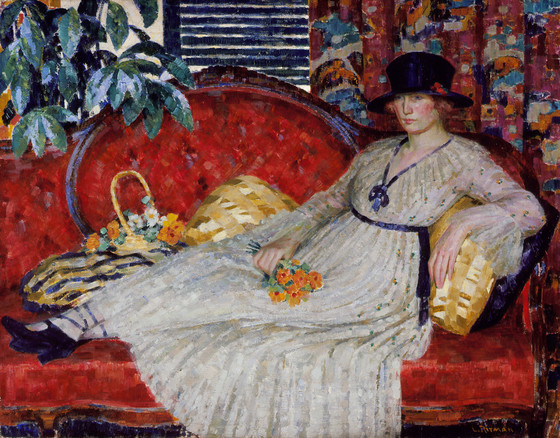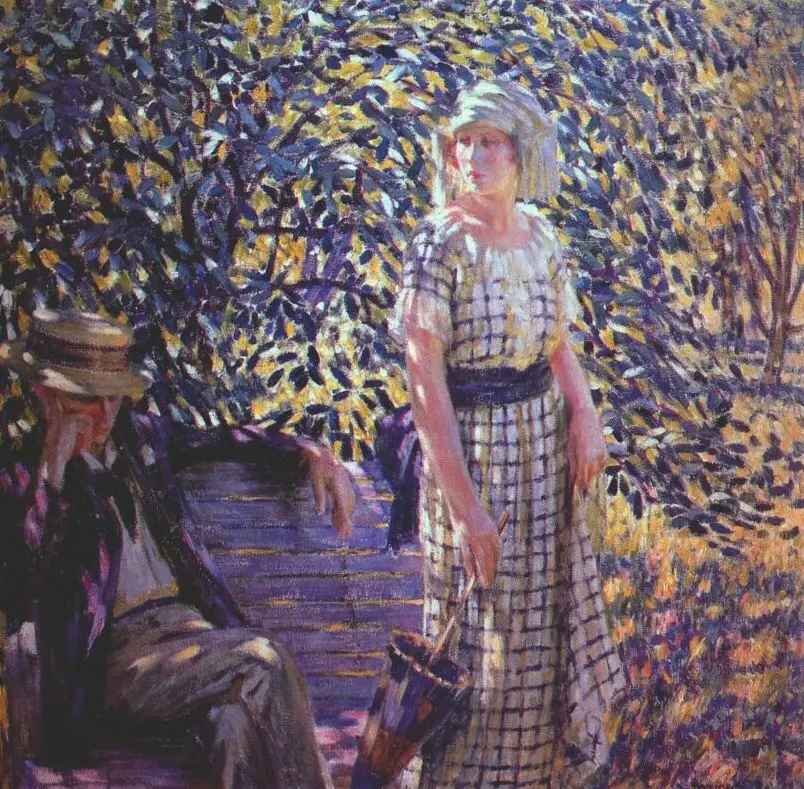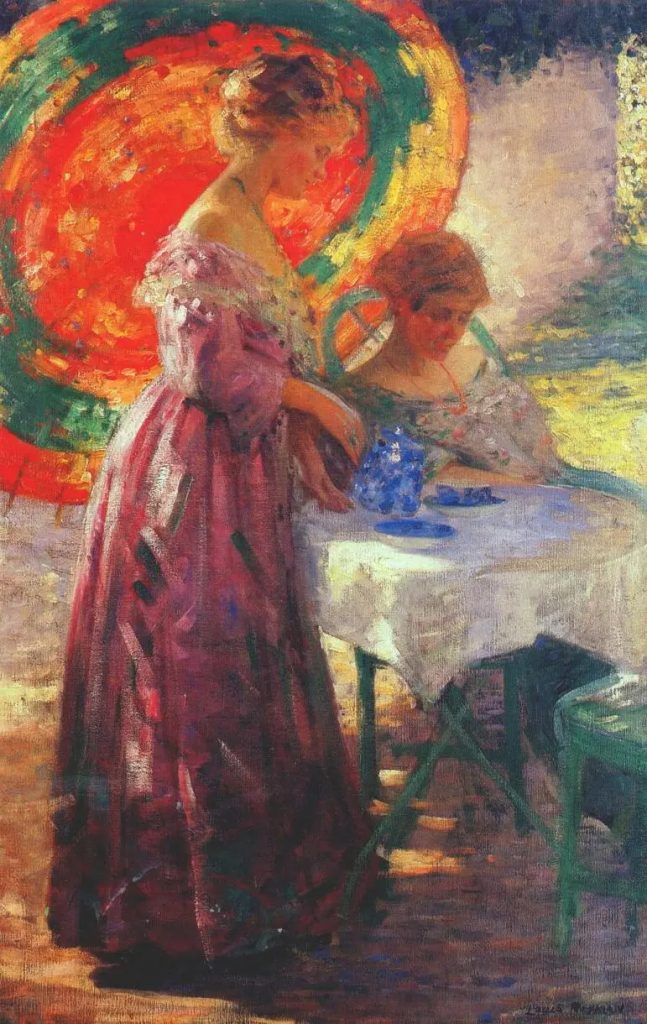
Louis Ritman (1889–1963) was a distinguished American artist known for his contributions to the world of Impressionist and Post-Impressionist painting during the early to mid-20th century. Born on August 25, 1889, in Odessa, Ukraine, Ritman’s journey unfolded against the backdrop of social and political upheaval, ultimately leading him to become a celebrated figure in the art world.
Louis Ritman was born into a Jewish family in Odessa, which was then part of the Russian Empire. His childhood coincided with a period of widespread social unrest and economic turmoil in the region. In 1904, seeking refuge from the political unrest and the rise of anti-Semitic sentiments, the Ritman family made the pivotal decision to immigrate to the United States. This journey marked the beginning of Louis Ritman’s American chapter.

Ritman’s early interest in art manifested itself during his teenage years in New York City. Recognizing his talent and passion, his parents encouraged his artistic pursuits, and he enrolled in art classes at the National Academy of Design. Under the guidance of prominent artists of the time, Ritman honed his skills and developed a unique artistic vision.
Parisian Sojourn
In 1910, seeking to immerse himself in the epicenter of the art world, Ritman embarked on a transformative journey to Paris. The city’s vibrant art scene and the influence of the Impressionist movement left an indelible mark on the young artist. Ritman absorbed the techniques and philosophies of artists like Claude Monet and Pierre-Auguste Renoir, whose emphasis on capturing the fleeting effects of light and color would profoundly shape Ritman’s own artistic style.
Louis Ritman returned to the United States in 1913, bringing with him the enriched palette and innovative techniques he had acquired in Paris. This marked the beginning of his career as an artist, and he soon gained recognition for his unique fusion of European Impressionism with American subject matter.
Settling in Chicago during a period known as the Gilded Age, Ritman found himself surrounded by a burgeoning cultural scene and a cityscape undergoing rapid transformation. The juxtaposition of opulence and industrialization provided ample inspiration for Ritman’s evolving artistic expression. He captured the essence of the city in his works, depicting bustling urban scenes and the interplay between light and shadow.

Ritman’s artistic prowess and commitment to his craft led to his appointment as an instructor at the Art Institute of Chicago. This period marked a dual role for Ritman, as he not only continued to create and exhibit his own works but also played a vital role in shaping the next generation of artists. His influence extended beyond the canvas, as he shared his insights into the principles of Impressionism and the transformative power of art.
The outbreak of World War I brought about a shift in Ritman’s artistic focus. During this tumultuous period, he began to explore themes of human resilience and the impact of war on society. The somber tones and reflective mood in these works reflected Ritman’s response to the global upheaval, showcasing the artist’s ability to adapt his style to the prevailing socio-political climate.
The post-war period marked a renewal for Ritman, both personally and artistically. His palette brightened, and he returned to the vibrant hues that characterized his earlier Impressionist works. Ritman’s paintings during this time often featured idyllic landscapes, bathed in sunlight and exuding a sense of tranquility. These light-filled canvases became emblematic of his optimistic view of life’s possibilities.
Ritman’s reputation as a prominent artist continued to grow, and he held numerous solo exhibitions in prestigious galleries across the United States. Critics praised his ability to capture the fleeting nuances of nature and urban life, highlighting his mastery of color and form. His works found homes in private collections and major art institutions, cementing his legacy as a key figure in American art.
Impact of the Depression
The onset of the Great Depression in the 1930s presented a challenging period for artists, as economic hardships gripped the nation. Ritman, however, persevered, adapting his artistic themes to convey the resilience of the human spirit in the face of adversity. His works continued to resonate with audiences, providing a source of inspiration and solace during a difficult era.
Louis Ritman continued to paint and exhibit his works well into the 1950s and early 1960s. His legacy endures not only in the canvas but also in the lives he touched as an educator. The artists he mentored and the students he inspired carry forward his commitment to artistic exploration and expression.

Louis Ritman passed away on March 21, 1963, leaving behind a body of work that reflects the evolution of American art during a transformative period in history. His contributions to the realms of Impressionism and Post-Impressionism continue to be celebrated, with his paintings serving as windows into the dynamic interplay of light, color, and emotion that defined his artistic vision.






